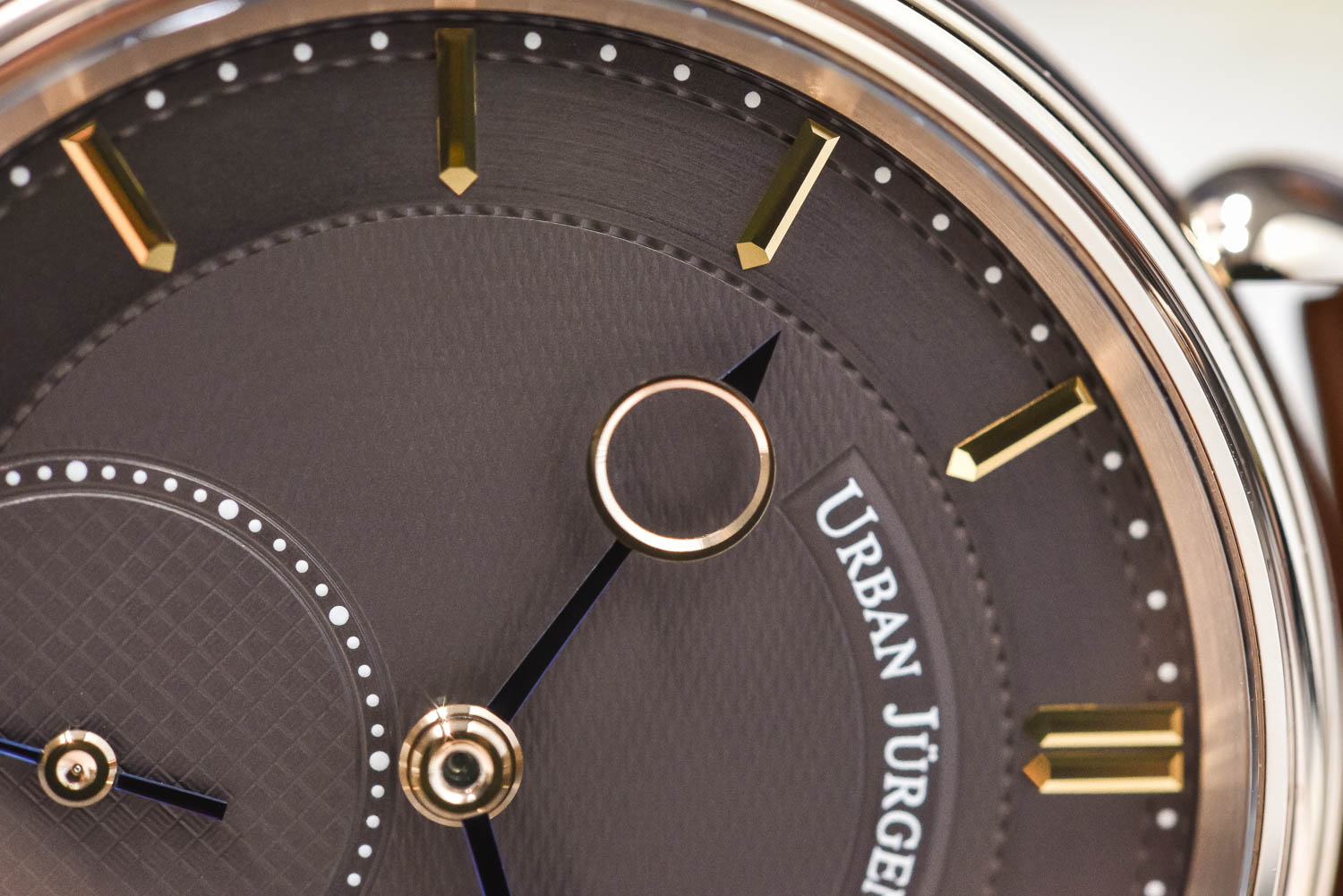Behind-the-Scenes – How Urban Jürgensen detail-obsessed watchmakers manufacture hands, turning raw material into works of art

The Swiss/Danish high-end watch manufacturer has just unveiled its new “ateliers” in the center of Biel / Bienne. The brand was already headquartered in the city and it is now based in a superb 1920 mansion, which has been tastefully renovated to provide the perfect setting for its detail obsessed craftsmen. We took the opportunity of our recent visit to their new home to take a close look at the way they manufacture hands. If fine craftsmanship and a meticulous attention to details are evident with the brand’s watches, it is nonetheless captivating to see their watchmakers at work – because without doubt it is one of the last and very few places where things are still made this way…
Every production step is executed by hand, using time-honored techniques and century old methodology. The painstaking process requires some 50 production-steps and one day of work for just one set of 3 hands (hours, minutes and seconds hand). This is a complex, time-consuming ritual but the result is simply stunning.
From the rough laser cut steel shape to a work of art
The production process starts by shaping the hands – the shape is laser-cut from a steel strip. The rough cut laser cut hands are inspected one by one as the watchmaker performs deburring work, removing by hand any burrs lefts by the cutting process.
The hands are then sanded on their sides and surfaces, before then being fixed onto a plate, on which sanding is performed with a pencil sanding machine. The hands are then flattened using tweezers; an operation that will be repeated in between most production steps.
The following step consists of reaming the hand holes to the exact diameter into the hand pipe (canon) and a hand eye (an asymmetrical gold insert) will be affixed at a later stage.
After drilling, the contour of the holes is carefully milled. The arms of the hands are then rounded on a grinding wheel. This delicate operation must be carried out to give them a semi-cylindrical shape and obtain a perfectly uniform profile.
The arms are then patiently hand-polished to obtain a perfect luster. This is performed several times in succession, using increasingly fine grain diamond paper, and then finally with diamond paste.
The hand’s tips are then hand-polished in their turns. This is performed with abrasive paper too, and then by rubbing the hand tip on a zinc plate with abrasive paste, a specific technique that allows to keep it perfectly flat.
Cleaning is a crucial preparation step for the bluing of the hands. Only a fine polishing and a perfect cleaning of the hand would allow the technician to achieve a fine, regular bluing. Any particle polluting the surface of the hand (dust, grease, etc.) can cause an uneven bluing. Cleaning is performed using different baths in the machine pictured below.
Hands are blued the traditional way at Urban Jürgensen (thermally treated rather than chemically blued). Bluing hands requires a thorough mastery of the process. Bluing steel to a given color can only be achieved by heating the metal to a specific point (around 300°). It is not only decorative, as it also creates a protective oxide layer on the hand, leaving the part much harder and protecting it against rust. At Urban Jürgensen, they aim at reaching the darkest blue, before the color fades and then turns to grey.
Bluing is performed on top of an electric heater which is much more effective than with a flame, the heat being more regular on a flat surface thanks to an equal distribution of the temperature. The brass part onto the hotplate has cut outs to ensure that there will be no variations in the blue color across the hands: if necessary, the watchmaker will move the hand onto these cut outs if the bluing is uneven.
The actual length of the operation was just under one minute – the bluing can take anytime from a few seconds to a minute.
Once the bluing has been performed, the gold hand’s pipe can then be riveted, a meticulous task requiring dexterity and precision.
For the hour hand, the gold “eye” is driven into the hole already prepared for it, and is held in place by the sheer accuracy of the fit.
Once fitted onto the hand, the pipe and eye are hand-polished to obtain a perfect shine. The operation is performed using finer and finer abrasive. It must be performed with great precision to polish the gold parts without touching their steel support.
Obviously, manufacturing hands this way is a time-consuming process requiring incomparable expertise but the result is truly spectacular. The beauty of parts crafted by hand, embellished by skills passed down through generations, and performed by talented craftsmen cannot be rivalled by industrial processes. Each piece becomes unique, the gift of imperfection being authenticity. This is the true hallmark of Haute Horlogerie.
More information on www.urbanjurgensen.com.




















9 responses
Most big brands offer rough hands if you take these hands as the standard(only a few brands excepts, such as Lang & Heyne or Moritz Grossmann)
Wonderful read and very impressive standard of watch making. Thanks!
Absolutely amazing detail work, the results will last forever.
Looks like a sad copy of Kari Voutilinen…
More article like this one please
As I know, Voutilainen worked with UJ during his early years. So his watches also shared similar hands and tear drop lugs.
@Alban… Voutilainen used to work for Urban Jürgensen, and later did prototyping and unique pieces for them. Kari Voutilainen was allowed to use a similar case with tear drop lugs, and the recognizable hands.
@Alban
Sad how people comment mindless things without doing any research. Kari worked for Urban Jürgensen previously in his carrier and took many of the designs for his own work after he left.
Urban was actually the first showing that design. Kari and Urban were colleagues. If you ever held an Urban Jorgensen watch, you’d see it is not a sad copy of anything. Personally, I might consider deleting that comment. (PS- I love Kari, own one, and think both makers are titanic giants of the watchmaking world!)